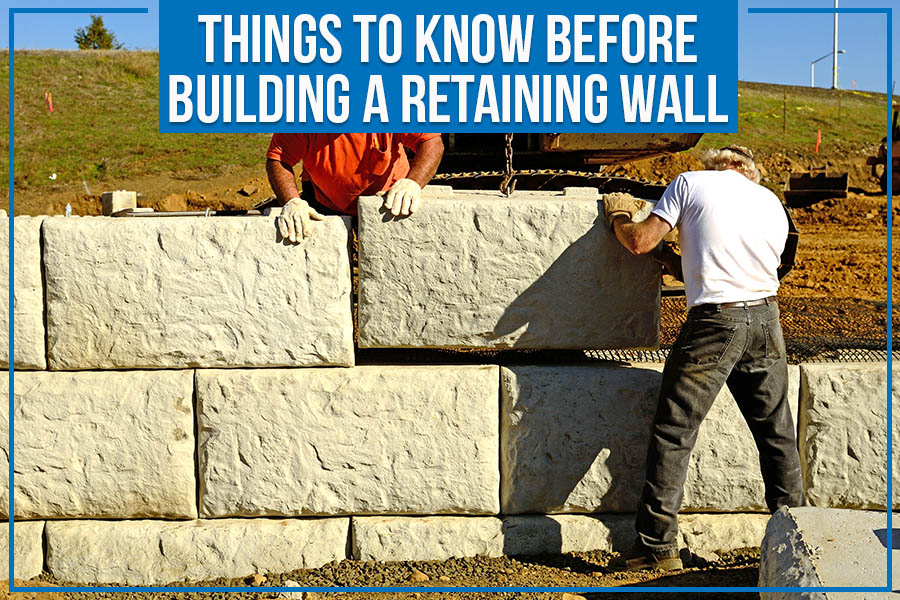Key Takeaways:
- A retaining wall holds back earth or water and can be used to prevent soil erosion, support slopes, and create flat surfaces.
- There are numerous types of retaining walls, and the type you choose depends on the purpose of the wall, the location, and other factors.
- Retaining walls are “structures” and thus require approval from the city.
- The approval process can vary depending on your location, but it typically involves submitting plans for the retaining wall to the city council.
- The setback is the minimum distance that the retaining wall must be built from the property line.
- In most cases, the setback is typically five feet or more.
- You should get written approval from your neighbors before proceeding with the project.
- Be sure to involve your neighbor in decision-making if you are building a retaining wall on the property boundary.
- You and your neighbor are accountable for the wall if it is on the property boundary. This is because the wall affects both of your properties.
- Be sure to consult with a professional engineer to ensure that the retaining wall is designed and built properly.
- Taller retaining walls are more expensive to build and more likely to experience problems such as cracking and leaning.
When building a retaining wall on your property, there are numerous things you should know before getting started. This post will cover retaining walls and property boundaries in detail. We’ll talk about materials, permits, the size and location of your retaining wall, and tips on avoiding common mistakes made when building a retaining wall. So, if you’re considering building one on your property, read on!
The Purpose of a Retaining Wall
The first thing to comprehend is what exactly a retaining wall is and why you might need one. A retaining wall holds back earth or water. Retaining walls prevent soil erosion, support slopes, and create flat surfaces in areas where the ground is sloped. In other words, you can use a retaining wall to level things out if your property has any hilly or sloped areas. There are numerous types of retaining walls, and the type you select relies on the purpose of the wall, the location, and other factors.
Get Permission from Your City Council
You must obtain permission from your local city council before building a retaining wall. This is because retaining walls are considered “structures” and thus require approval from the city. The process of obtaining approval can vary depending on your location, but it typically involves submitting plans for the retaining wall to the city council and getting approval from them.
How Close Can it be to a Boundary?
When building a retaining wall on a property boundary, you must know the setback requirements. The setback is the minimum distance that the retaining wall must be built from the property line. In most cases, the setback is typically five feet or more. However, check with your local building department to determine the specific requirements in your area. You don’t want to build your retaining wall only to find out later that it is not in compliance and you have to tear it down.
Get a Written Approval from Your Neighbors Before Building a Retaining Wall on Property Boundaries
Getting written approval from your neighbors is also important. This is because the retaining wall can potentially affect their property as well. For example, if the retaining wall is not built properly, it could collapse and damage their property. Thus, getting their approval in writing before proceeding with the project is important.
Ensure a Proper Drainage System
Another important thing is that the retaining wall will affect the drainage on your property. Therefore, you need to ensure that the drainage system on your property can accommodate the additional water that will be stored behind the retaining wall. Otherwise, you could end up with flooding problems.
Maximum Height of Your Retaining Wall
The height of your retaining wall is also an important consideration. Most city ordinances have a maximum height for retaining walls built on property boundaries. Around three to four feet is typically the maximum height allowed. Therefore, you will need to get a permit from the city if you plan on building a taller retaining wall.
Taller retaining walls are also more expensive to build. This is because they require more materials and labor. In addition, taller retaining walls are more likely to experience problems such as cracking and leaning. If your area faces high winds, you must consider this when deciding how tall to build it. Taller walls are more likely to be blown over in high winds. Therefore, you must weigh the pros and cons of building a taller retaining wall before deciding.

What to Know When Building a Retaining Wall on Your Property Line
If you’re considering building it on your property line, you should keep a few things in mind. A retaining wall can be a great way to improve the look of your property and add value. However, there are also some potential risks involved. Here’s what you need to know:
- Check with your local building department to see if there are any regulations or restrictions on building retaining walls on property boundaries.
- Ensure you understand the difference between a retaining wall and a privacy fence. Retaining walls hold back soil, while privacy fences don’t.
- Be aware that depending on the height of the proposed retaining wall, you may need a permit.
- Ensure you choose the right materials for the job. The most common type of retaining wall is made from concrete blocks, but other options include brick, stone, and wood.
- Be sure to factor in the cost of professional installation when budgeting for your retaining wall project. While it is possible to build a retaining wall yourself, it is generally best to leave this job to the professionals.
- Once your retaining wall is built, regularly check it for cracks or other damage. Repair any damage promptly to prevent further issues.
What if the Wall Collapses? Who will be Responsible?
You and your neighbor are accountable for the wall if it is on the property boundary. This is because the wall affects both of your properties. If the wall were to collapse, it would damage your neighbor’s property and possibly cause injuries. Therefore, you should both be involved in the decision-making process regarding building or repairing the wall.
Conclusion
Building a retaining wall on your property boundary can be a great way to enrich the look of your property and increase its value. By following the tips above, you can be sure that your retaining wall will be built correctly and last many years.
Check out our blog post about outdoor kitchen ideas.
Denver Patio Masters, serving Parker, CO, is your go-to company for retaining wall installation services because of our exceptional workmanship, reasonable rates, and unparalleled customer service. We have experienced builders who are knowledgeable about the most appropriate materials and techniques to use for each project. Plus, we offer free consultations so you can get an accurate estimate of the cost of your retaining wall.
Book a Free Consultation Today!





